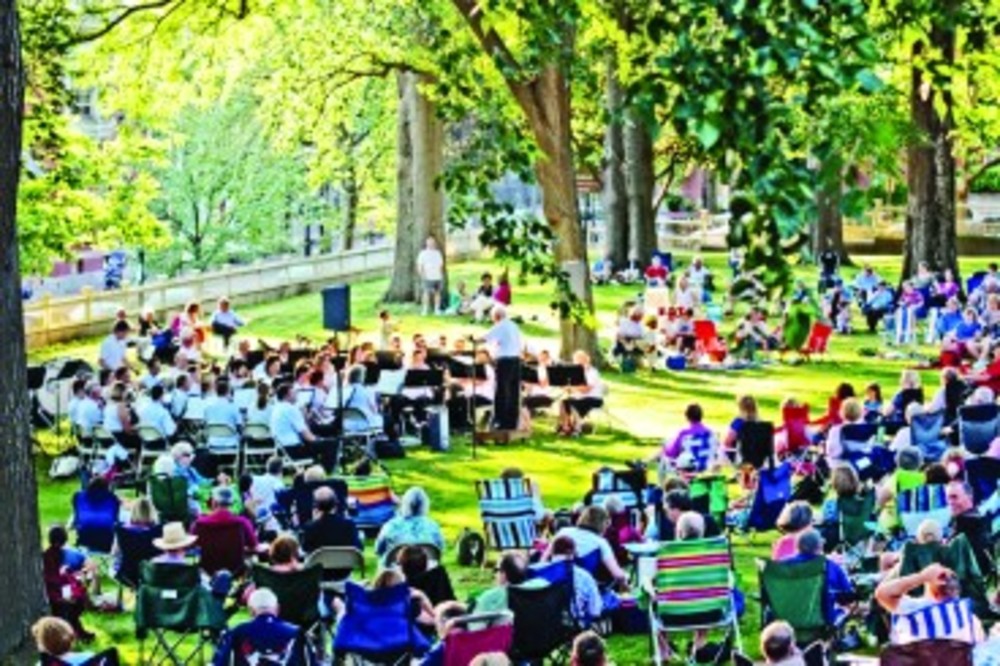Nipping a problem in the bud
A nightmare for elms in Providence yields artful results
 The Rhode Island Historical Society (RIHS), founded in 1822, is the fourth-oldest historical society in the United States and Rhode Island’s largest and oldest historical organization. Its mission is to collect, preserve and share “materials from Rhode Island’s past, so that present and future generations can comprehend more fully their predecessors, their communities, and themselves.”
The Rhode Island Historical Society (RIHS), founded in 1822, is the fourth-oldest historical society in the United States and Rhode Island’s largest and oldest historical organization. Its mission is to collect, preserve and share “materials from Rhode Island’s past, so that present and future generations can comprehend more fully their predecessors, their communities, and themselves.”
Last month, RIHS announced that it will lose a second elm tree from the grounds of the John Brown House Museum (52 Power Street, Providence), a designated National Historic Landmark, built in 1788. What makes this significant is that the 18th century house is on a plot of land that boasts a grove of historic elm trees. Symbolizing strength of will and intuition, elms were popular trees to plant due to their rapid growth, variety of foliage and seasonal shade. In fact, each summer RIHS offers Concerts under the Elms, an outdoor concert series held under the canopy of elms at the John Brown House Museum.
The Jewish Voice contacted RIHS to find out more details. Below is an interview with RIHS Executive Director C. Morgan Grefe, Ph.D.
Tell me about the situation with the trees at the John Brown House Museum.
We are deeply saddened at the loss of another elm tree at the John Brown House Museum. These trees are invaluable parts of Providence’s landscape and its history, and we hope to honor them by replanting complementary trees that will continue to provide beauty, shade, and clean air for decades to come.
I understand that the elm tree that needs to be removed does not have Dutch elm disease.
The tree has been tested for numerous diseases, including Dutch elm and the canker Sphaeropsis Ulmicola, which killed an elm on the grounds in 2013. Right now, we know that the tree is not infected with Dutch elm; in fact, the disease that killed it has yet to be identified by any of the specialists working on our trees. All tests have been negative, but the tree is dead and has since lost much of its bark and several major branches. City Forrester Doug Still and experts from Brown University agree that the tree presents a safety risk in its present condition and must be removed. We continue to work on strengthening the trees and their environment so they can continue to not only live, but thrive in the Sharpe Elm Grove, named for noted tree enthusiasts Mary Elizabeth and Henry D. Sharpe.
When will the diseased elm come down?
We don’t know. Our challenging weather this winter makes planning very difficult.
What are the ramifications of losing this second tree?
We are very sorry for the loss of this tree and are working on a replanting plan for the grounds. We want to act soon to ensure that this wonderful grove remains the urban oasis that it has been for generations.
Do you have a strategy on raising funds to replace the tree?
The RIHS is actively seeking funds for a replanting plan for the grounds of the John Brown House Museum. In our communication with members and in all publicity about the loss of these elms, we have highlighted our need for assistance. We do have a fund for the maintenance of our trees, but replacement is extremely costly, and additional donations will make an enormous difference in our ability to address this issue in a timely fashion.
When you lost the last elm, some amazing artwork was created from the wood.
The RIHS recently received the gift of two pieces made of wood salvaged from the 2013 elm. An elegant bowl and vase turned by Michael Grady of Forestdale, Mass., have become a part of the permanent collection of the Society.
How did Michael Grady get the wood from that tree to fashion a bowl and vase?
Mr. Grady is a member of a group of wood turners from Cape Cod who attended the tree cutting and took wood with which they are making beautiful things for us. He is the first of the group to return finished pieces to us. Professor Dale Broholm of the RISD Furniture Department also took several large planks, but those pieces must season for two to three more years before they can become the table he has planned for us.
Are there creative plans for the currently diseased tree?
All the artisans who were involved last year have been contacted about this tree as well, and we are open to other creative ideas for the use of this beautiful, historic wood. The RIHS hopes that beautiful things will come from this elm as well. Anyone interested may contact me directly at 401-331-8575.
KARA MARZIALI is the Director of Communications at the Jewish Alliance.







